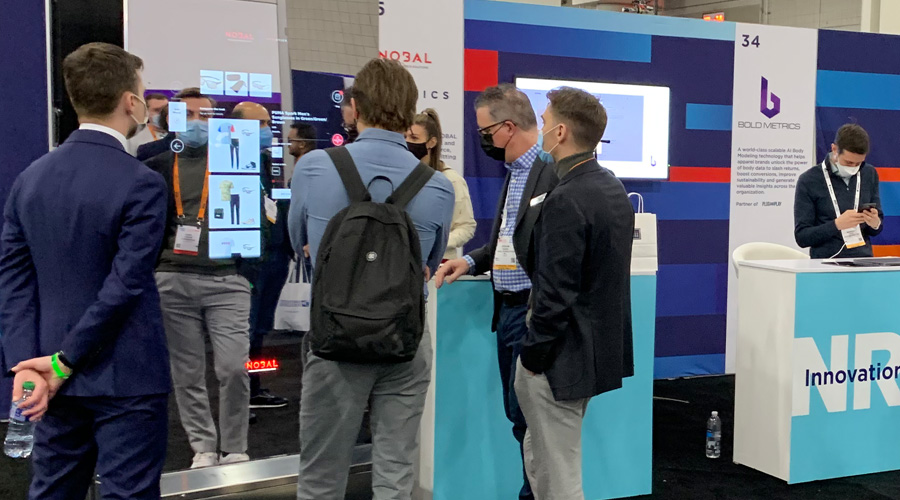Brick & mortar retailers have always faced challenges – and opportunities – in capturing customers’ attention and building a lasting connection. With the new set of challenges brought on by the pandemic, they now have even less time to successfully engage customers in a meaningful way, with fewer customers visiting stores, and fewer spending extended lengths of time in-store.
In-store engagement in the brick & mortar retail industry is often talked about but ill defined. How exactly do retailers successfully engage customers? What makes up an engaging experience and how do you know if you’re doing it right?
Customer experience vs. customer engagement
While retailers need to get both the customer experience and customer engagement right, the two are distinct. Customer experience is made up of the opinions and preferences that customers have of a brand after walking into a store. To successfully create a positive customer experience, customer-facing retail operations must be safe, convenient, seamless, and frictionless. In our post pandemic era, a store or brand that fails to demonstrate they place the highest priority on health and safety run the risk of losing customers.
And retailers are prioritizing the customer experience like never before. Salesforce recently issued a report called The Customer Experience in Retail: Data Drives Everything that found 82% of retailers named ‘improving customer experience’ as their highest business priority for the year ahead. ‘Increasing revenues’ came in at 43%, far behind customer experience. The report also touched on shifting consumer demands and the ability of retailers to meet them as an imperative – chief among them the expectation that in-store experiences be digitally enabled.
Its clear that the customer experience is critical to retail success. But to successfully engage a consumer, retail leaders must take advantage of the opportunity in-store to build a connection with consumers and build brand loyalty through an engaging and memorable in-store experience that differentiates a brand from its competitors. Doing it right can lead to greater conversion rates and stronger store performance.
As McKinsey noted in its recent reportThe Next Normal in Retail: The Customer Experience Imperative, the pandemic has ‘hobbled’ brick & mortar retail operations, with ‘physical distancing and a new preference for self-service altering the formula for customer experience’. The COVID-19 crisis has undoubtedly led to dramatic shifts in consumer behavior, and brick & mortar retailers now must work even harder to foster deep engagement, brand loyalty and a customer engagement experience that benefits the bottom line.
So where do retail leaders start?
- Leverage data to localize. At the core of successful customer engagement is a curated experience, and the retail technology and data that exist today make it easy for retailers to create a personalized experience. The power of the retail management platform, is rooted in building store-specific profiles using advanced tools to collect and analyze multiple sources of data, allowing users to gain AI-driven behavioural-based insights into each store. Those local insights allow retailers to localize and personalize products, messages, and campaigns, which in turn drive traffic and conversion rates. As McKinsey noted in its report, moving forward, retail winners will generate insights from ‘customers and construct targeted retention plans, messages, and offers to maintain the customer relationship in this era of brand switching and cost consciousness’.
- Bring the space to life. A full 65% of the world’s population is driven by what they see. The power of visuals to reach and engage this segment of the population is significant – visuals stick better in long term memory, visual learners transmit messages faster when they are presented visually, and visual images and cues can trigger emotions. Visual merchandising is therefore critical for customer engagement and can foster lasting brand loyalty while driving conversion rates. When empowered with local insights through a sophisticated retail management platform, brick & mortar retailers can create a brand story through curated merchandise that reflects the store location and local customer preferences, offering customers a tailored experience from the minute they set foot in the store. A great platform will seamlessly integrate sales data, allowing teams to redesign stores, tweak marketing plans, and update product selection to reflect each location.
- Empower the front line to focus on engagement. The retail industry is experiencing a severe labour shortage. Many retailers are finally returning to pre-pandemic levels of hiring , yet as The Financial Times recently reported , there are currently 1 million empty retail positions in the US. To highlight the severity of the issue, the Financial Times reported that leading up to this holiday season, Dick’s Sporting Goods is short 10,000 employees, and Kroger and Michael’s are each hoping to find 20,000 seasonal employees, but face significant challenges. And those are only three of many examples.
While the reasons behind the labour shortage are complex, one reason cited by retailers and employees is that employees aren’t set up for success in our post pandemic normal. Many retailers are turning to retail management tools that provide them and their frontline staff with features that streamline and strengthen communication, and optimize operations. Among them is AI and automation, which is shifting retail business models and driving competitiveness while creating empowered employees who can focus their time on more meaningful work. Of these software platforms, ML and AI-driven features can greatly reduce time and level of effort for frontline employees while streamlining communications. HQ gains visibility, control, and a simple way to assess the effectiveness of each store, while stores strengthen their compliance rates and increase performance. Above all, employees are empowered and set up to successfully focus on engaging the consumer.
The pandemic has changed just about everything for brick & mortar retailers, throwing a number of challenges at brand leaders and increasing the need to build a connection with consumers in a short period of time. Luckily, today’s technology has the power to change the in-store engagement game and strengthen customer engagement. As Salesforce noted in its survey, data provides retailers an opportunity to have a 360-degree view of its customer, which is a competitive imperative in a post- pandemic world.
Winning brick & mortar retailers are leveraging and expanding the use of retail data and retail analytics.







